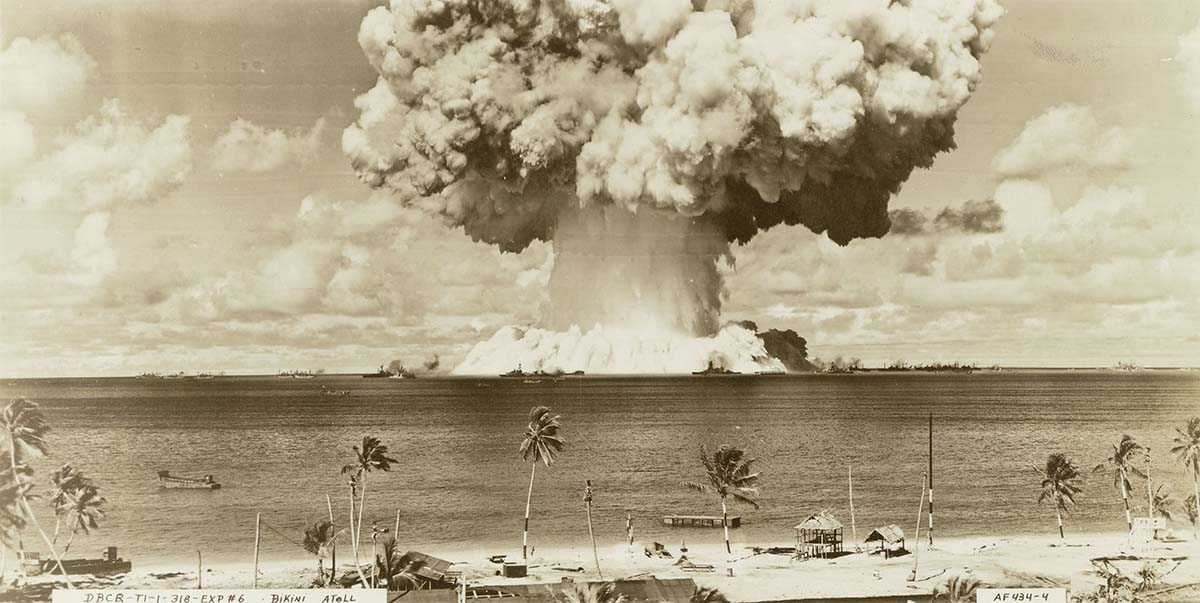The Bikini
The two-piece swimsuit was unveiled on 5 July 1946.

Prototypes of the two-piece bikini can be traced to the reign of Diocletian (244-311). The modern swimsuit, however, was first introduced to the press on 5 July 1946 as automotive designer and lingerie factory owner Louis Réard’s riposte to Jacques Heim’s two-piece ‘atome’ swimsuit.
Two-pieces first appeared in the 1930s and, although too indecent to be worn in public, had become more common in America during the Second World War as US War Production Board regulation L-85 required a ten per cent reduction in the amount of material used in women’s beachwear.
Heim’s ‘atome’ was advertised as ‘the smallest swimsuit in the world’, though it still covered the navel. Réard set out to go smaller – enough to pass through a wedding ring, as he put it. This he christened the ‘bikini’ in reference to the first peace-time atmospheric atomic tests, which had begun on Bikini Atoll in the Marshall Islands four days before his launch. Heim had claimed his ‘atome’ as the smallest, but Réard had ‘split the atome’.
Unable to find a model willing to wear the daring outfit, Réard hired Micheline Bernardini, a nude dancer from the Casino de Paris, who received over 50,000 fan letters after her appearance. Despite this, the bikini did not initially sell well and Réard returned to lingerie manufacture.
In 1951 a bikini round in what later became ‘Miss World’ was organised as part of the Festival of Britain, but, after complaints from national participants and Pope Pius XII, the following year it was replaced with evening gowns.
With the abolition of the Hays Code in the US, bikinis began to appear in films in the 1960s, despite still being banned in many public places in the country. Raquel Welch in a fur bikini in One Million Years BC proved a turning point and by the late 1960s the bikini was becoming a common sight on the beach. Réard’s lingerie company would sadly not reap the rewards, however. It folded in 1988, four years after his death.